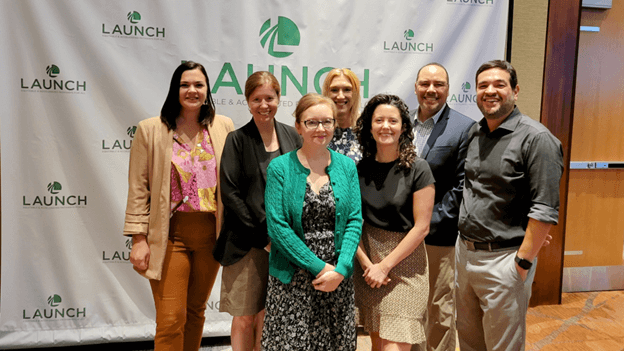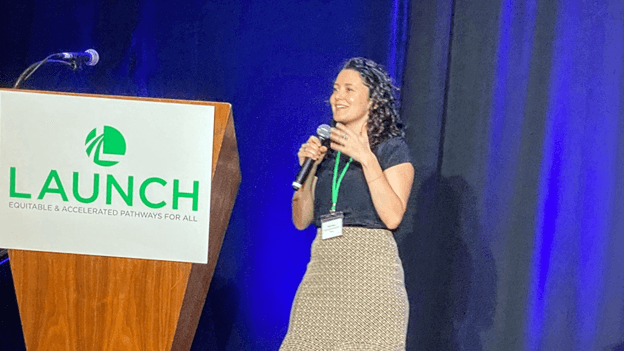Back in February, we shared that Illinois had been selected as one of 11 states participating in Launch: Equitable & Accelerated Pathways for All. This month, we traveled to Indianapolis alongside our state team for a convening that brought together both the innovation and impact cohorts to deepen their work and learn from one another. We are excited to continue our work alongside our core partners as we continue to develop and test our pilot solutions as part of Launch. As part of the convening, we were invited to share our Illinois Launch story in a TED Talk-style presentation to the cross-cohort convening. What follows is that story, which highlights the ways in which the Launch process has enabled us to think about what innovation would mean in Illinois.



Telling the Illinois Launch Story
Our Illinois Launch journey begins with some wins: we have robust college and career pathways policies, including the innovative College and Career Pathway Endorsements that formalize the experiences and knowledge students should be supported to obtain by the time they graduate high school. That work has scaled rapidly, from 47 students earning an endorsement on their diplomas in the first eligible graduating class, the Class of 2020, to more than 1,000 students in the Class of 2023. Dual credit is scaling rapidly around the state and reaching students who have historically not been supported to access early college credit. We have a statewide focus on college and career readiness manifest in our secondary school quality measures and a number of interagency tables where the state’s education and workforce leaders throughout the P-20 pipeline collaborate to make sure their systems are more aligned for seamless transitions throughout the pipeline.
Further, we have done this in the context of local control, from local districts to community colleges to the state agencies stewarding our education and workforce pipeline. There is much to celebrate in Illinois, and yet significant gaps in postsecondary transitions and outcomes persist across demographic lines. These data show us that our systems are not addressing long-standing inequities and are not serving the students historically excluded from opportunity. With these leading indicators and thoughtful work, why are we not seeing commensurate results in student outcomes?
Participating in the innovation cohort of the Launch initiative has enabled us to spend time considering what exactly is happening as students transition from secondary to postsecondary. We have convened as a cross-cutting team, representing secondary and postsecondary education, agency leaders and practitioners, student assistance, and financial aid. What we’ve embarked on through Launch has been a journey to think differently, to learn differently, to listen differently, and ultimately to collaborate differently.
So instead of assuming that we knew all the answers or that national experts could know the solutions that would meet the needs of Illinois students, we embarked on empathy research. This meant that each team member interviewed students directly to understand the challenges they face, the opportunities they have found valuable, and what they would need from our education and workforce systems to succeed in the ways we hope. What we heard challenged us to test our own hypotheses around what is happening across the state, and we learned much more about the nuance of student experiences. For example, instead of assuming that eligible Black and Latinx students who do not enroll in dual credit lack adequate information, we talked to Black and Latinx students and learned that, in fact, they had been actively advised against enrolling in dual credit or that they don’t see their peers in those courses and thus don’t see them as relevant for themselves.
As a result of the empathy research, we heard one core message: When students are considering their pathway beyond secondary, there are too many doors. And where do they all even go?
As we considered that lesson, we kept returning to the image articulated in JFF’s Big Blur of a tollway, where instead of having to stop and pay your fare, you can now just keep driving through open tolls on many of our nation’s roads. The burden is shifted to the system to facilitate payment in a way that doesn’t slow the driver down.
In our initial conversations where we asked ourselves, “What should we design?” we considered concepts like the Power of 15, where students are expected to earn at least 15 college credits by the time they graduate high school to accelerate their progression into and through postsecondary. But ultimately, one of our team members pushed us beyond that idea, reflecting that it did not feel innovative enough given what we were learning from students. They reminded us that we haven’t come together to tinker around the margins but to wholeheartedly commit to thinking of how our systems can be changed in service of student success.
We continued to return to our empathy research and ask ourselves, “What problems are we solving? And for whom?” This brought us back to the concept of “too many doors” and made us ask what it would look like if there were no wrong doors. We began to recognize that a lack of clarity among the adults designing and managing our systems results in a lack of clarity for students and their families.
Ultimately, we are tasked as leaders with answering how to shift the burden to the system and off of students and their families. Our team has been working together to identify the hard boundaries—what won’t work in Illinois, given what we know—and further identify the softer boundaries of our systems that we can push on or blur. We are working to identify where there is energy, capacity, and opportunity to push our systems beyond where they have gone up to this point. We are looking to work through the discomfort of change to design solutions that will truly transform student experiences and outcomes.
The work is complex and, at times, uncomfortable. Beyond that, it is taking a substantial amount of time, exploration, and collaboration to arrive at a pilot concept that we think will meet the needs of many students for whom our systems have not always been what they need. We are excited to test this concept with our peers and colleagues through Launch, with our leaders back home in Illinois, and most importantly, with the students we hope to better support.
In Partnership With
Launch coordinating partners are Advance CTE, Education Strategy Group, ExcelinEd, Jobs for the Future (JFF), and New America. The initiative is generously supported by the Annie E. Casey Foundation, Bill & Melinda Gates Foundation, Bloomberg Philanthropies, Carnegie Corporation, Joyce Foundation, and Walton Family Foundation.





